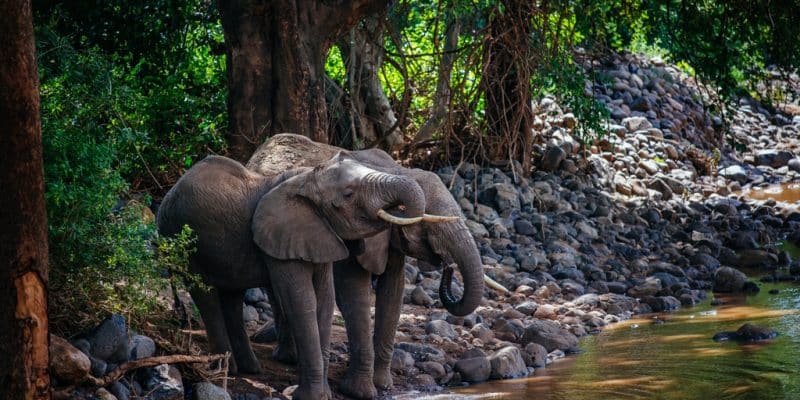Forest elephants, gorillas and other large fruit-eating animals play a key role in sequestering carbon dioxide (CO2). These highly-trafficked animals help to disperse the seeds of large trees that store CO2 more effectively in tropical forests. A study recently published in the journal PLOS Biology warns against poaching of key species in the restoration of tropical forests.
Faced with the urgency of climate change, decision-makers, financial partners and civil society organisations are stepping up the number of meetings and initiatives aimed at mitigating global warming. Reducing greenhouse gas (GHG) emissions and improving carbon dioxide (CO2) capture and sequestration are among the solutions to the climate crisis. And in this respect, large fruit-eating animals play a key role that should be taken into account at the forthcoming international climate meetings.
In a new article published in the journal PLOS Biology, the Wildlife Conservation Society (WCS) highlights the contribution of forest elephants, gorillas (and other large animals), tapirs, hornbills, helmeted cassowaries and other large animals to the dispersal of large seeds from tree species with a high carbon storage capacity.
The impact on tropical forest restoration
“Animals play an essential role in maintaining the integrity of these forests. Forests that are home to all animal species, at healthy population densities, sequester and store more carbon than those that have lost elements of their fauna. Maintaining an intact fauna is therefore an essential element of any forest conservation strategy aimed at combating climate change”, explains John Robinson, co-author of the study and holder of the Joan L. Tweedy Chair in Conservation Strategy at the WCS.
Read also- GABON: one of the last strongholds of forest elephants, exposed to ivory trafficking
But all over the world, these large fruit-eating animals are victims of poaching. In Central Africa, the forest elephant pays the highest price for its tusks, which are sold on the black market in Africa and Asia. Gabon, home to two-thirds of the forest elephant population, lost 11,000 individuals between 2004 and 2012 to poaching. This phenomenon has accelerated in recent years in Africa, to such an extent that the International Union for Conservation of Nature (IUCN) has classified this subspecies of elephant on its red list of threatened species.
The decline of forest elephants in Central Africa
According to the Swiss-based intergovernmental organisation, the African elephant population has fallen by 86% in 30 years. The gorilla is suffering the same fate. This great ape is also on the IUCN’s list of critically endangered animals. In Latin America, the tapir is facing forest fires and habitat loss, mainly in Brazil. Yet the WCS study reveals that an adult forest elephant contains around 720 kg of carbon (2.64 tonnes of CO2 equivalent).
Improving the CO2 sequestration capacity of tropical forests
According to the WCS study, which contributes to the protection of biodiversity in Africa and elsewhere in the world, in the Neotropics ecozone for example, the “defaunation” of large primates and tapirs, which disperse the seeds of large-seeded trees with higher wood density, should lead to long-term losses in the above-ground biomass of trees of 3 to 6% on average, but up to almost 40%.
“In central Thailand, tree species that depend on seed dispersal by large-bodied fruit eaters account for nearly a third of total carbon biomass”, says the non-governmental organisation (NGO) based in New York in the United States of America. There is therefore an urgent need to include the protection of large fauna in initiatives to combat climate change, and more specifically the restoration of tropical forests, which account for 50% of the world’s carbon absorption capacity, according to the study “Asynchronous saturation of carbon sinks in African and Amazonian tropical forests”, published in 2020 in the scientific journal Nature.
Jean Marie Takouleu







